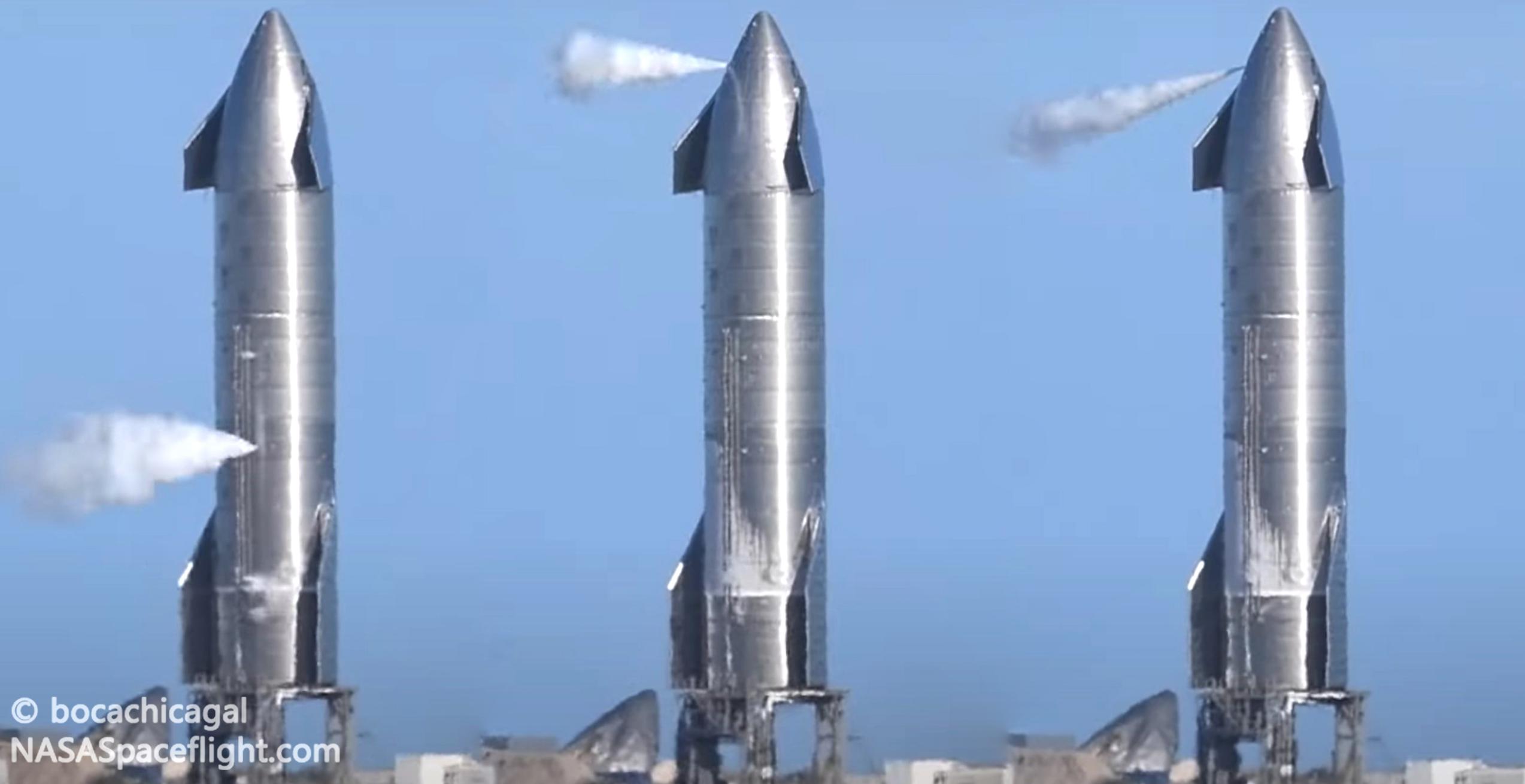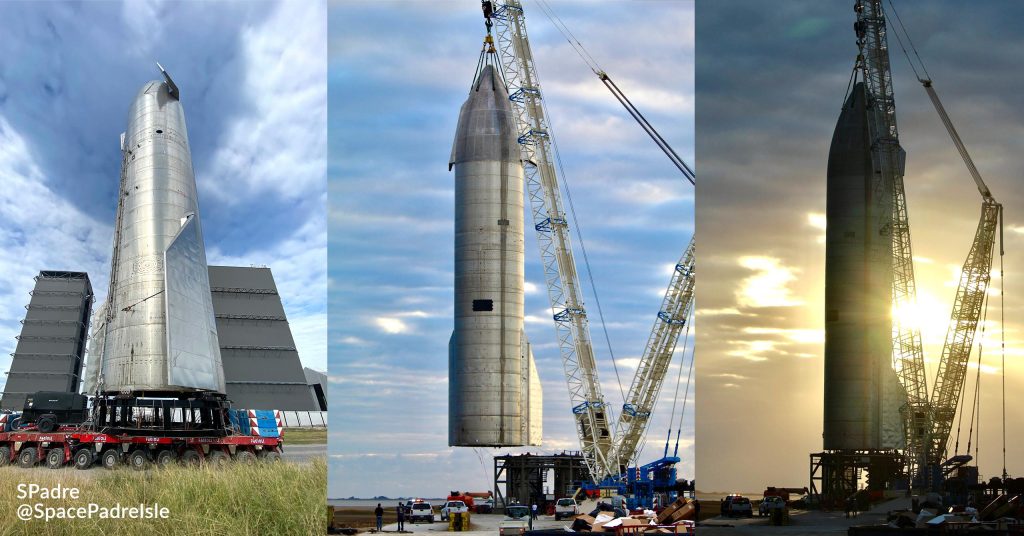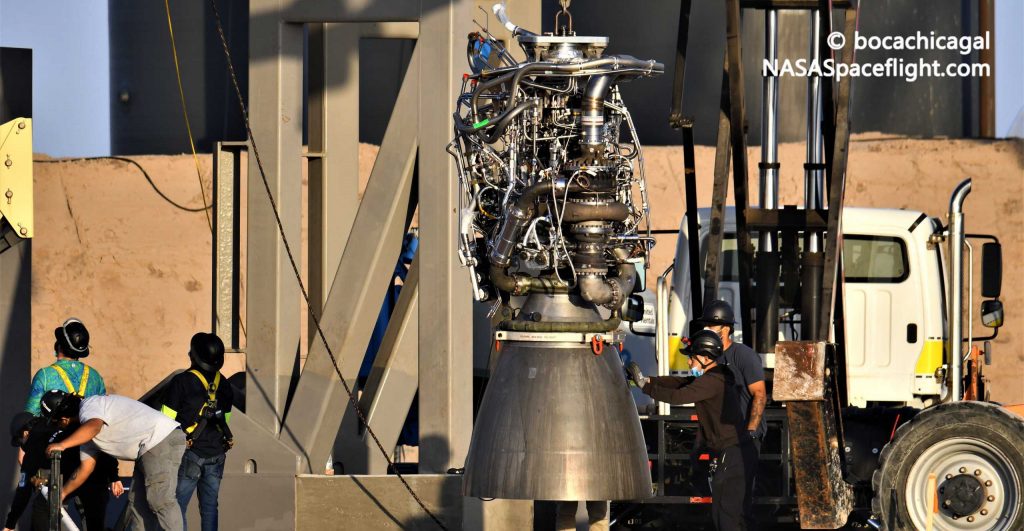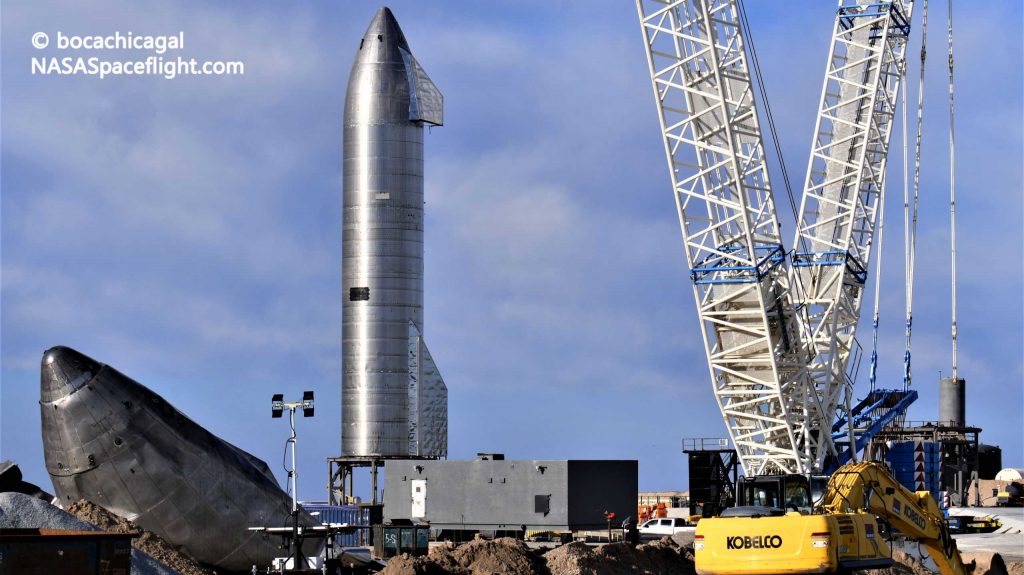

News
SpaceX’s next Starship gets frosty to prepare for first launch
One week after the rocket was rolled from the factory to the launch pad, SpaceX appears to have successfully put Starship serial number 9 (SN9) through two routine pre-launch tests.
On December 22nd, significantly less than two weeks after Starship SN9 suffered a significant handling or production accident that caused it to tip several degrees and impact the walls of its production facility, SpaceX wrapped up speedy repairs and transported the rocket about 1.5 miles down the road.
In some combination of a minor miracle and Starship’s exceptionally sturdy design, the rocket – standing ~50 meters (~165 ft) tall and weighing around 75 to 100 metric tons (175,000-220,000 lb) – tipped sideways onto two of its four pre-installed flaps. Despite being subjected to off-nominal forces, the far stronger structural mechanisms connecting those flaps to Starship’s main airframe were seemingly unharmed and SpaceX was able to remove and replace the crumpled control surfaces mere days after the incident.

On December 28th, that work began in earnest with what is generally known as an ambient temperature pressure test, filling Starship SN9’s propellant tanks with benign air-temperature nitrogen gas. Used to check for leaks, verify basic vehicle valve and plumbing performance, and ensure a basic level of structural integrity, SN9 appeared to pass its ambient proof test without issue – albeit late in the window.
Testing wrapped up on Monday shortly after the ambient proof and was followed by the main event – a cryogenic proof test – a bit less than a day later on Tuesday. The exterior of Starship SN9 began to develop a coating of frost after SpaceX started loading its oxygen and methane tanks with liquid nitrogen around 2:30 pm CST (UTC-6). While used similarly to verify structural integrity like an ambient pressure test, a ‘cryo proof’ adds the challenge of thermal stresses to ensure that Starship can safely load, hold, and offload supercool liquids.
In SN9’s case, it’s unclear if SpaceX fully or only partially loaded the rocket’s main propellant tanks with liquid nitrogen, while a lack of frost at the tip of its nose implies that the Starship’s smaller liquid oxygen ‘header’ tank wasn’t filled as part of the test. Altogether, Starship should be capable of holding roughly 1200 metric tons of liquid nitrogen if fully loaded.
The lack of SN9’s LOx header tank participation in Tuesday cryo proof testing is intriguing on its own, as it implies that SpaceX will either perform a second cryo proof later this week or is confident enough in LOx header tank and transfer tube performance to forgo any testing. In the latter case, SpaceX would likely just use the build-up to Starship SN9’s first Raptor static fire test as a wet dress rehearsal (WDR) and a cryo proof for the smaller tank system.
According to NASASpaceflight’s managing editor, if Monday and Tuesday’s ambient and cryo proof tests were as uneventful and successful as they seemed, SpaceX may move directly on to triple-Raptor static fire preparations. In a first, Starship SN9 was transported to the launch pad last week with two of three central Raptor engines already installed and had that missing third engine installed within a few days of arrival. SN9 is also the first Starship to attempt its first proof tests with any Raptor – let alone three – installed.


If SpaceX does move directly from cryo proof testing to a three-engine static fire, that will mark another first for the Starship program and signal growing confidence and a desire for speedier preflight tests – both of which will help accelerate flight testing. As of now, SpaceX has yet to cancel a road closure scheduled on Wednesday, December 30th but it’s far more likely that a trio of 8 am to 5 pm CST closures requested on January 4th, 5th, and 6th will host Starship SN9’s first static fire attempt(s). According to NASASpaceflight.com, Starship SN9 is expected to attempt a 12.5 km (~7.8 mi) launch similar or identical to SN8’s as early as a few days after that static fire. Stay tuned for updates!

News
Tesla starts showing how FSD will change lives in Europe
Local officials tested the system on narrow country roads and were impressed by FSD’s smooth, human-like driving, with some calling the service a game-changer for everyday life in areas that are far from urban centers.

Tesla has launched Europe’s first public shuttle service using Full Self-Driving (Supervised) in the rural Eifelkreis Bitburg-Prüm region of Germany, demonstrating how the technology can restore independence and mobility for people who struggle with limited transport options.
Local officials tested the system on narrow country roads and were impressed by FSD’s smooth, human-like driving, with some calling the service a game-changer for everyday life in areas that are far from urban centers.
Officials see real impact on rural residents
Arzfeld Mayor Johannes Kuhl and District Administrator Andreas Kruppert personally tested the Tesla shuttle service. This allowed them to see just how well FSD navigated winding lanes and rural roads confidently. Kruppert said, “Autonomous driving sounds like science fiction to many, but we simply see here that it works totally well in rural regions too.” Kuhl, for his part, also noted that FSD “feels like a very experienced driver.”
The pilot complements the area’s “Citizen Bus” program, which provides on-demand rides for elderly residents who can no longer drive themselves. Tesla Europe shared a video of a demonstration of the service, highlighting how FSD gives people their freedom back, even in places where public transport is not as prevalent.
What the Ministry for Economic Affairs and Transport says
Rhineland-Palatinate’s Minister Daniela Schmitt supported the project, praising the collaboration that made this “first of its kind in Europe” possible. As per the ministry, the rural rollout for the service shows FSD’s potential beyond major cities, and it delivers tangible benefits like grocery runs, doctor visits, and social connections for isolated residents.
“Reliable and flexible mobility is especially vital in rural areas. With the launch of a shuttle service using self-driving vehicles (FSD supervised) by Tesla in the Eifelkreis Bitburg-Prüm, an innovative pilot project is now getting underway that complements local community bus services. It is the first project of its kind in Europe.
“The result is a real gain for rural mobility: greater accessibility, more flexibility and tangible benefits for everyday life. A strong signal for innovation, cooperation and future-oriented mobility beyond urban centers,” the ministry wrote in a LinkedIn post.
News
Tesla China quietly posts Robotaxi-related job listing
Tesla China is currently seeking a Low Voltage Electrical Engineer to work on circuit board design for the company’s autonomous vehicles.

Tesla has posted a new job listing in Shanghai explicitly tied to its Robotaxi program, fueling speculation that the company is preparing to launch its dedicated autonomous ride-hailing service in China.
As noted in the listing, Tesla China is currently seeking a Low Voltage Electrical Engineer to work on circuit board design for the company’s autonomous vehicles.
Robotaxi-specific role
The listing, which was shared on social media platform X by industry watcher @tslaming, suggested that Tesla China is looking to fill the role urgently. The job listing itself specifically mentions that the person hired for the role will be working on the Low Voltage Hardware team, which would design the circuit boards that would serve as the nervous system of the Robotaxi.
Key tasks for the role, as indicated in the job listing, include collaboration with PCB layout, firmware, mechanical, program management, and validation teams, among other responsibilities. The role is based in Shanghai.
China Robotaxi launch
China represents a massive potential market for robotaxis, with its dense urban centers and supportive policies in select cities. Tesla has limited permission to roll out FSD in the country, though despite this, its vehicles have been hailed as among the best in the market when it comes to autonomous features. So far, at least, it appears that China supports Tesla’s FSD and Robotaxi rollout.
This was hinted at in November, when Tesla brought the Cybercab to the 8th China International Import Expo (CIIE) in Shanghai, marking the first time that the autonomous two-seater was brought to the Asia-Pacific region. The vehicle, despite not having a release date in China, received a significant amount of interest among the event’s attendees.
Elon Musk
Elon Musk and Tesla AI Director share insights after empty driver seat Robotaxi rides
The executives’ unoccupied tests hint at the rapid progress of Tesla’s unsupervised Robotaxi efforts.

Tesla CEO Elon Musk and AI Director Ashok Elluswamy celebrated Christmas Eve by sharing personal experiences with Robotaxi vehicles that had no safety monitor or occupant in the driver’s seat. Musk described the system’s “perfect driving” around Austin, while Elluswamy posted video from the back seat, calling it “an amazing experience.”
The executives’ unoccupied tests hint at the rapid progress of Tesla’s unsupervised Robotaxi efforts.
Elon and Ashok’s firsthand Robotaxi insights
Prior to Musk and the Tesla AI Director’s posts, sightings of unmanned Teslas navigating public roads were widely shared on social media. One such vehicle was spotted in Austin, Texas, which Elon Musk acknowleged by stating that “Testing is underway with no occupants in the car.”
Based on his Christmas Eve post, Musk seemed to have tested an unmanned Tesla himself. “A Tesla with no safety monitor in the car and me sitting in the passenger seat took me all around Austin on Sunday with perfect driving,” Musk wrote in his post.
Elluswamy responded with a 2-minute video showing himself in the rear of an unmanned Tesla. The video featured the vehicle’s empty front seats, as well as its smooth handling through real-world traffic. He captioned his video with the words, “It’s an amazing experience!”
Towards Unsupervised operations
During an xAI Hackathon earlier this month, Elon Musk mentioned that Tesla owed be removing Safety Monitors from its Robotaxis in Austin in just three weeks. “Unsupervised is pretty much solved at this point. So there will be Tesla Robotaxis operating in Austin with no one in them. Not even anyone in the passenger seat in about three weeks,” he said. Musk echoed similar estimates at the 2025 Annual Shareholder Meeting and the Q3 2025 earnings call.
Considering the insights that were posted Musk and Elluswamy, it does appear that Tesla is working hard towards operating its Robotaxis with no safety monitors. This is quite impressive considering that the service was launched just earlier this year.








